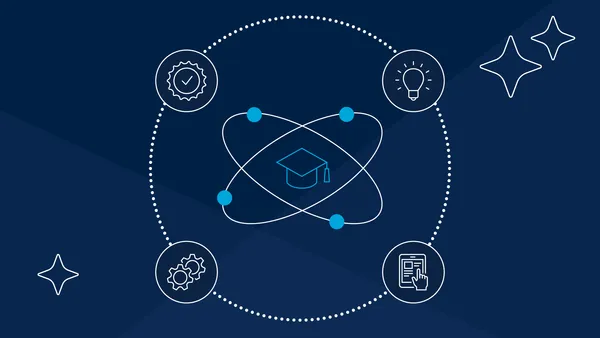Scott Pulsipher is the president of Western Governors University, a nonprofit online institution headquartered in Salt Lake City.
A majority of college students, around 70%, are now enrolled in at least one online course, signaling a promising shift that could benefit learners who have historically been let down by traditional education models.
Most students are readily embracing this tech-enabled future, according to new research from WGU Labs, the research and innovation arm of Western Governors University.
The organization surveyed more than 3,000 students across nine diverse institutions including community colleges, private and public four-year institutions, and primarily online, not-for-profit colleges. At least 80% of respondents agreed that online and hybrid are effective formats of learning. More than 70% agreed that ed tech not only makes their courses more engaging, but also helps them more effectively learn course material.

First-generation learners were especially positive about the shift online. More than three-quarters of these students, 76%, indicated they would be interested in taking online courses in the future, nearly ten percentage points higher than their peers with college-educated parents.
But there’s a disconnect. Despite growing interest and potential for the medium to revolutionize learning and break down barriers, too many online courses offer a lackluster learning experience, resulting in poor outcomes that can leave vulnerable students worse off.
Not all online learning is created equally
Relative to their peers, first-generation students are less likely to reach graduation. This signals that institutions are failing to meet the needs of a more diverse student body. While far from a silver bullet, the ability to learn anytime, anywhere — and often for a fraction of the cost — can be particularly impactful for these individuals who are more likely to juggle full-time jobs, come from low-income families, and provide for dependents while pursuing their degrees.
Their unique experiences may also render them more open to innovative, tech-enabled models. Whereas college-educated parents often project their own aspirations and preconceived notions of what college means onto their children, first-generation students are immune.
Despite the potential for online learning to enhance the student experience and drive equitable outcomes, many institutions have historically deployed tech primarily to mitigate revenue shortfalls and meet enrollment targets, often replicating face-to-face instruction via antiquated web-conferencing tools and demanding full price tags that leave students saddled in debt.
Programs like these are a reminder that online learning is a tool — not a means to an end. And that end should ultimately be to deliver value to students.
The future of learning is online, but higher ed leaders won’t meet this moment without a deliberate online strategy. To that end, leaders should ensure online courses and programs include the following key components:
- Intentional design: Online learning should be purposefully designed for the virtual environment, removing artificial constraints that exist in traditional models of learning — for instance synchronous virtual lectures, and fixed-pace schedules — and leveraging digital tools that have been strategically selected for their ability to enhance learning.
- Excellent teaching: Whereas in-person learning requires that faculty live near campus, programs that deploy online learning have the benefit of sourcing the best teachers in the world. But it’s not enough to identify instructors with expertise in teaching; faculty must also be given sufficient time, resources, input, and training to effectively use ed tech.
- Engaging experience: Innovations in ed tech can enable faculty to pull from diverse sources of media and content, leverage motivational techniques, and engage their students in ways that are difficult to replicate in-person at scale via virtual labs, peer-to-peer interaction and practice environments.
- Personalized learning: Thanks to advances in artificial intelligence, readily available data on how students are doing can empower faculty to adapt and personalize learning materials and experiences through timely interventions. At WGU, for instance, we use machine intelligence to better understand our students’ momentum at a given moment, drawing on indicators such as how they’re interacting with learning resources, the extent to which they’re engaging with faculty, and how they’re progressing. By identifying when students have less momentum and are in greater need of support, faculty can design personalized interventions at the moments when students need them most.
- Valuable credentials: Technology should be used to deliver an affordable learning experience. But affordability is only part of the equation. For students to derive real value, learning experiences must ultimately lead to economic mobility.
Every learner deserves the opportunity to earn a credential that can transform their lives, families and communities, and online learning can indeed be a powerful tool for expanding access to underserved student populations, including first-generation students.
But access without attainment is an empty promise. Leaders from long-respected, brick-and-mortar colleges and innovative online universities need to think differently about educating and supporting a diverse student body, whether through investing in new supports and wraparound services, or by embracing technology.
Done right, online learning can be a powerful vehicle for connecting individuals to opportunity. But if leaders aren’t careful, tech-enabled instruction — just like its in-person counterpart — has the potential to leave underserved students behind.






















